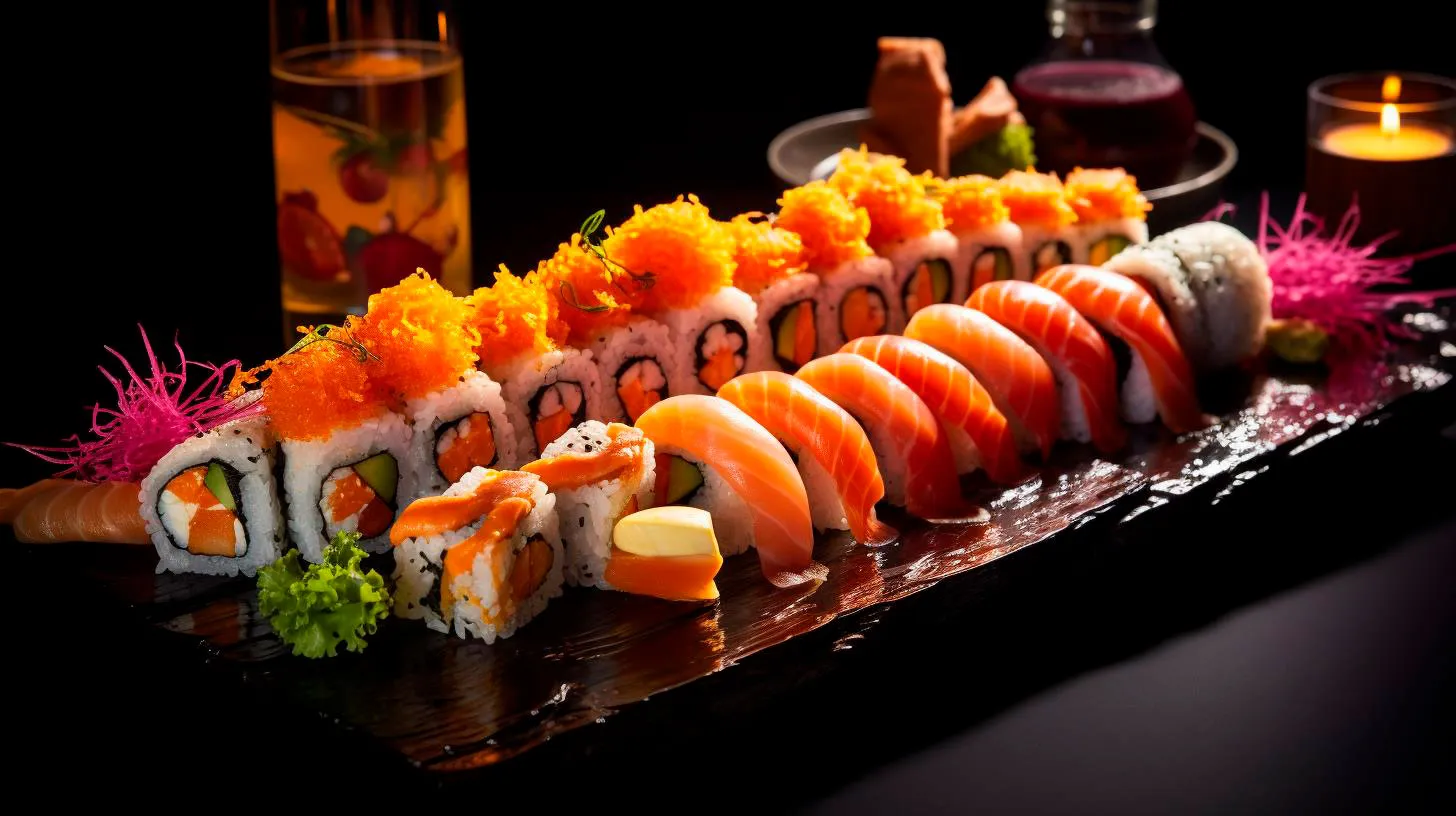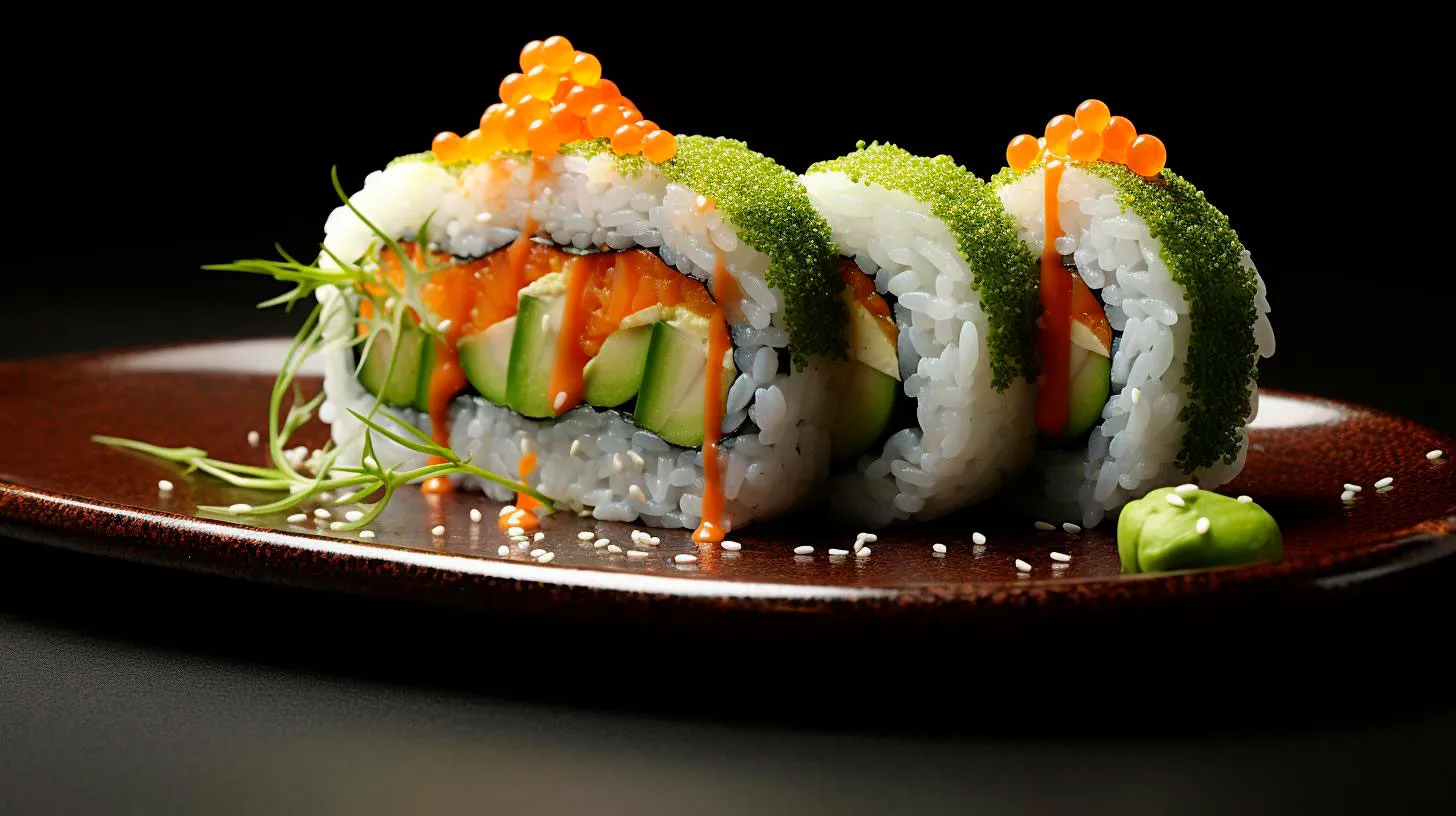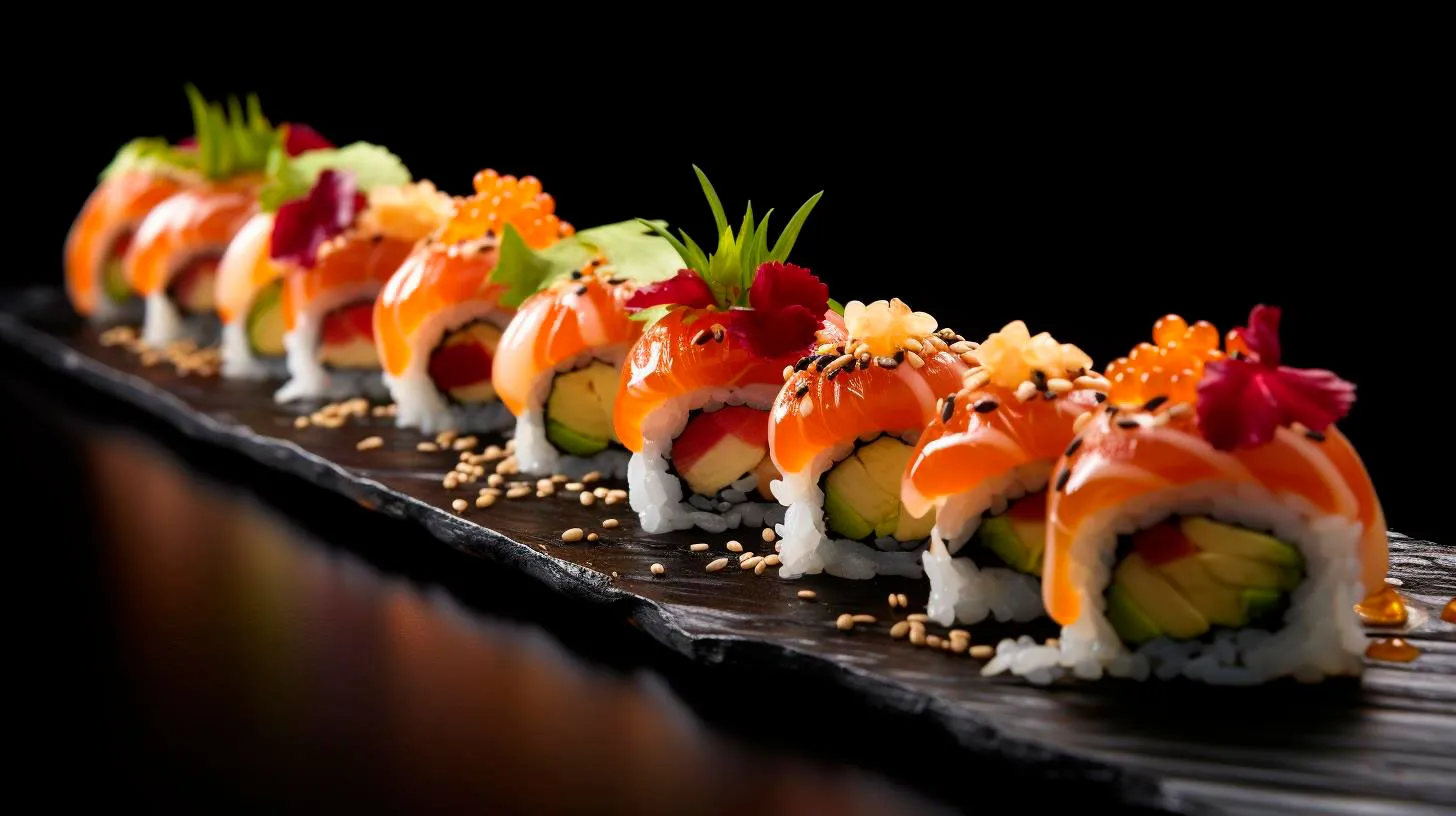The Ultimate Guide to Sushi Knife Care: Preserving the Art of Precision
To truly preserve the art of precision, proper care and maintenance of the sushi knife are of utmost importance. In this ultimate guide, we will explore everything you need to know about sushi knife care, from choosing the right knife to cleaning and sharpening techniques.
Why Care for Your Sushi Knife?
A sushi knife, also known as a sushi chef knife or yanagiba, is meticulously designed to meet the demanding requirements of slicing through raw fish and other ingredients with utmost precision. These knives have a single bevel, a thin and sharp blade, and a long, narrow shape. Taking care of your sushi knife not only ensures its durability and longevity but also enhances its performance, allowing you to slice perfect, restaurant-quality sushi every time.
Choosing the Right Sushi Knife
When it comes to choosing a sushi knife, selecting the right one is crucial for achieving optimal results. Here are a few key factors to consider:
- Blade Material: High-carbon stainless steel is the preferred choice for sushi knives due to its exceptional sharpness and resistance to corrosion.
- Blade Length: Sushi knives typically range from 8 to 13 inches. Longer blades are suitable for slicing larger fish, while shorter blades offer more control when working with smaller ingredients.
- Handle: Traditional sushi knives feature a wooden handle made from magnolia, which offers a comfortable grip and absorbs moisture. Alternatively, knives with synthetic or stainless steel handles offer better durability and sanitation.
Proper Handling and Storage
To maintain the longevity of your sushi knife and prevent any accidental damage, follow these best practices:
- Storage: Store your sushi knife in a wooden sheath or a knife block to protect the blade and prevent accidents.
- Cutting Surface: Always use a cutting board made of wood or soft plastic to preserve the sharpness of the sushi knife. Avoid cutting on hard surfaces like ceramic or glass.
- Handling: Hold the knife by the handle and avoid gripping the blade. This reduces the risk of accidents and also prevents transferring body oils onto the blade.
Cleaning and Maintenance
Proper cleaning and maintenance are essential to keep your sushi knife in optimal condition. Follow these steps after each use:
- Hand Wash: Always hand wash your sushi knife with warm, soapy water immediately after use. Avoid leaving it unwashed for prolonged periods, as this can lead to rust and corrosion.
- Drying: Thoroughly dry the knife with a clean towel to remove any moisture. Pay extra attention to the handle and the area where the blade meets the handle, as these can accumulate moisture.
- Sharpening: Regularly sharpen your sushi knife to maintain its keen edge. You can use a sharpening stone or seek professional sharpening services.
- Stain Removal: If you notice any stains on the blade, apply a mixture of baking soda and water, then gently scrub with a soft cloth. Rinse and dry thoroughly.
Tips for Safe Usage
Here are some additional tips to ensure safe usage of your sushi knife:
- Focus and Concentration: Always practice utmost focus and concentration when handling a sushi knife. Distractions can lead to accidents, causing injury.
- Professional Guidance: If you are new to using sushi knives, consider seeking guidance from a professional sushi chef or enrolling in a knife skills course to learn proper techniques.
- Knife Protection: Using a knife guard or blade cover while transporting or storing your sushi knife adds extra protection and prevents accidents.
Key Takeaways
Proper care for your sushi knife is the key to preserving the art of precision in sushi-making. Remember these key takeaways:
- Choose a sushi knife made from high-carbon stainless steel for optimal sharpness and durability.
- Store and handle your sushi knife properly to prevent accidents and maintain its longevity.
- Hand wash, dry, and sharpen your sushi knife after each use to keep it in optimal condition.
- Ensure safe usage by practicing focus, seeking professional guidance, and using knife protection.
By following these guidelines, you can effectively preserve the art of precision and unlock the full potential of your sushi knife. Savor the experience of creating exquisite sushi, knowing that you have taken the necessary steps to care for your valuable tool.
Unlocking the Secrets of Sushi Knife Maintenance: Elevating Your Culinary Excellence
To unleash the full potential of your culinary skills, it is crucial to understand the secrets behind sushi knife maintenance. In this article, we will explore the key steps you need to take to keep your sushi knife in optimal condition, ensuring unrivaled precision and longevity.
Why Sushi Knife Maintenance Matters
A sharp sushi knife not only enhances your cutting technique but also guarantees the creation of aesthetically pleasing sushi pieces. With proper maintenance, your knife will retain its sharpness, allowing you to make clean cuts through fish and other ingredients without tearing or crushing them. An ill-maintained knife, on the other hand, not only compromises the quality of your sushi but can also be dangerous to handle. Regularly maintaining your sushi knife ensures safety, longevity, and elevated culinary excellence.
The Secrets to Sushi Knife Maintenance
1. Honing
Honing is the process of realigning the knife’s edge, ensuring it remains sharp and efficient. It is recommended to hone your sushi knife before each use. To do this, follow these steps:
- Hold the knife firmly at a 20-degree angle on a honing rod.
- Gently slide the knife across the rod, starting from the base to the tip.
- Repeat the process on the other side of the knife, maintaining a consistent angle.
- Remember to clean the knife after honing to remove any metal particles.
Regular honing keeps the blade aligned, making it easier to maintain its sharpness and reducing the frequency of sharpening.
2. Sharpening
Sharpening a sushi knife involves removing a fine layer of metal to regain a sharp edge. Unlike honing, which is done regularly, sharpening is required when the knife becomes dull. Here are the steps to effectively sharpen your sushi knife:
- Choose a whetstone with medium grit (1000-2000) and wet it with water for a few minutes.
- Hold the knife at a 15-degree angle and place it on the whetstone.
- Maintaining a consistent angle, push the knife away from you, using smooth and even strokes.
- Alternate sides after a few strokes to create an even edge on both sides of the blade.
- Repeat the process on a finer grit stone (3000-6000) for a polished finish.
- Rinse the knife to remove any residue and dry it thoroughly.
Regular sharpening keeps your sushi knife in prime cutting condition, ensuring precise cuts and smooth slicing.
3. Storage
The way you store your sushi knife plays a vital role in its longevity. Avoid simply tossing it into a drawer where it can collide with other utensils, risking blade damage. Instead, consider these best practices:
- Invest in a knife sheath or blade guard to protect the edge.
- Store the knife in a knife block or on a magnetic strip, keeping it separate from other utensils.
- Always ensure the knife is clean and dry before storing it to prevent corrosion.
Proper storage safeguards your investment and keeps your sushi knife sharp and ready for use.
The Advantages of Proper Sushi Knife Maintenance
By committing to regular sushi knife maintenance, you unlock a range of advantages that elevate your culinary excellence:
- Enhanced Precision: A well-maintained sushi knife enables you to achieve precise cuts, resulting in well-formed and visually appealing sushi pieces.
- Improved Safety: A sharp sushi knife reduces the chances of slippage, ensuring safe handling in the kitchen.
- Extended Lifespan: Regular maintenance helps prevent blade damage and corrosion, extending the life of your sushi knife.
- Time and Cost Savings: Proper maintenance reduces the need for frequent sharpening and replacement, saving you time and money in the long run.
Remember, mastery of sushi knife maintenance takes practice and dedication. However, the rewards in terms of culinary excellence are well worth the effort.
Unleash the full potential of your sushi-making skills by mastering the art of sushi knife maintenance. With regular honing, sharpening, and proper storage, your sushi knife will become an extension of your culinary expertise, allowing you to create exquisite sushi dishes with precision and finesse.
Mastering the Craft: Honing Your Sushi Skills Like a Pro
Whether you are an aspiring chef or simply a sushi enthusiast, mastering the craft of sushi-making can take your skills to a whole new level. In this article, we will explore the essential techniques, tools, and tips that will help you become a sushi pro.
The Art of Sushi: Essential Techniques
Creating sushi is not just about rolling ingredients into a seaweed wrap; it requires precision and finesse. Here are some essential techniques that every sushi aficionado should learn:
- Sushi Rice Perfection: The foundation of any good sushi roll is the rice. Mastering the art of sushi rice preparation is crucial. Use short-grain Japanese rice and season it with a well-balanced vinegar mixture for the perfect texture and flavor.
- Knife Skills: Slicing fish and other ingredients with precision is an integral part of sushi-making. Invest in a high-quality, sharp sushi knife and practice different cutting techniques to achieve clean, uniform slices.
- Sushi Rolling: From classic maki rolls to intricate designs, mastering the art of sushi rolling is essential. Learn how to control the pressure while rolling, ensuring the roll stays intact while maintaining a desirable shape.
- Sauce Application: Sauces play a vital role in enhancing the flavors of sushi. Learn how to apply sauces evenly for a balanced and delicious tasting experience.
Tools of the Trade
Equipping yourself with the right tools is essential for mastering the art of sushi-making. Here are some essential tools every sushi pro should have in their arsenal:
- Sushi Mat: A bamboo sushi mat, also known as a makisu, is an indispensable tool for rolling sushi rolls. It helps create tight, compact rolls while maintaining their shape.
- Sushi Knife: A sharp, high-quality sushi knife is a must-have for precise fish and ingredient cutting. Invest in a knife specifically designed for sushi-making to achieve professional results.
- Bowl of Water: Keep a bowl of water handy to wet your hands and prevent the sticky rice from clinging to your fingers while preparing sushi rolls.
- Bamboo Chopsticks: Bamboo chopsticks provide better grip and control while handling delicate sushi ingredients. They are also an essential part of the sushi dining experience.
Tips and Tricks for Sushi Success
Now that you have the essential techniques and tools at your disposal, here are some tips and tricks to take your sushi skills to the next level:
- Source the Freshest Ingredients: Sushi is all about fresh, high-quality ingredients. Source your seafood from reputable suppliers and ensure it is sushi-grade for the best flavors and safety.
- Experiment with Flavors and Ingredients: Don’t be afraid to get creative with your sushi rolls. Incorporate unique flavors, textures, and ingredients to elevate your creations and surprise your taste buds.
- Practice Makes Perfect: Sushi-making is an art that requires practice. Keep honing your skills by making sushi regularly and experimenting with new techniques.
- Keep it Simple: While complex sushi rolls can be impressive, simplicity often shines. Focus on perfecting the basics and highlight the natural flavors of the ingredients.
The Delicious Rewards: Sushi Key Takeaways
Mastering the art of sushi-making opens up a world of possibilities. Here are some key takeaways to inspire you on your sushi journey:
- Impress your friends and family with homemade sushi rolls that rival those from your favorite sushi restaurant.
- Enjoy a healthier and more cost-effective alternative to dining out by making sushi at home.
- Develop a deep appreciation for the subtleties of flavors and textures in sushi.
- Unleash your creativity by experimenting with different ingredients and flavor combinations.
So, grab your sushi mat, sharpen your knives, and embark on a thrilling journey to become a sushi pro. With practice, patience, and a passion for sushi, you’ll soon be creating beautiful and delicious rolls that will impress everyone around you.
From Novice to Expert: Unleash Your Potential in the World of Sushi
From understanding the different types of sushi to mastering the proper way to eat it, you’ll soon be well on your way to becoming a sushi expert.
The Different Types of Sushi
Before we dive into the techniques and intricacies of sushi, it’s important to familiarize yourself with the different types of sushi you’ll encounter:
- Nigiri: Nigiri sushi consists of a small mound of rice topped with a slice of raw or cooked fish. It is a classic and beloved type of sushi.
- Maki: Maki sushi is made by rolling various ingredients, such as fish, vegetables, and rice, in a sheet of seaweed called nori. These rolls are then sliced into bite-sized pieces.
- Sashimi: Sashimi is not technically sushi, but it is often served alongside sushi. It consists of thinly sliced raw fish or seafood that is served without rice.
- Temaki: Temaki, also known as hand rolls, are cone-shaped rolls filled with sushi rice, fish, vegetables, and other ingredients. They are wrapped in nori and eaten with your hands.
- Chirashi: Chirashi sushi is a bowl of sushi rice topped with a variety of sashimi, vegetables, and other garnishments. It offers a beautiful and flavorful sushi experience.
These are just a few examples of the vast array of sushi options available. Each type has its own unique flavors and preparations, making sushi a versatile and exciting cuisine to explore.
Mastering the Art of Sushi
Now that you’re familiar with the different types of sushi, it’s time to delve into the techniques and skills required to become a sushi expert:
1. Knife Skills:
A key aspect of sushi preparation is the ability to slice the fish or seafood with precision and finesse. Knife skills are crucial to ensure each piece of fish is cut to the perfect thickness and shape.
Key Takeaway: Mastering knife skills will help you elevate the quality and presentation of your sushi.
2. Rice Preparation:
The rice in sushi plays a vital role in its overall taste and texture. It should be cooked to perfection and seasoned with vinegar, salt, and sugar to achieve the ideal balance of flavors.
Key Takeaway: Understanding the art of rice preparation is essential for creating delicious sushi.
3. Sourcing Fresh Ingredients:
Sushi is all about freshness, so it’s crucial to source the highest quality fish and seafood for your creations. Ensure you choose reputable suppliers and check for freshness indicators.
Key Takeaway: Using fresh ingredients will significantly enhance the taste and overall experience of your sushi.
4. Presentation and Plating:
Sushi is as much about visual appeal as it is about taste. Mastering the art of presentation and plating will take your sushi creations to the next level. Attention to detail and creativity are key here.
Key Takeaway: A beautifully presented plate of sushi is a feast for the eyes as well as the palate.
Key Takeaways
- Understanding the different types of sushi will help you navigate menus and explore new flavors.
- Mastering knife skills and rice preparation are essential for creating authentic and delicious sushi.
- Using fresh ingredients is crucial for achieving the best taste and quality in your sushi.
- Attention to presentation and plating will enhance the overall dining experience.
As you embark on your journey to become a sushi expert, remember that practice makes perfect. Experiment with different ingredients, flavors, and techniques to develop your unique style. Embrace the artistry and precision of sushi, and soon enough, you’ll be impressing friends and family with your culinary creations.



